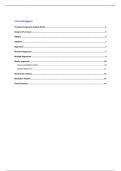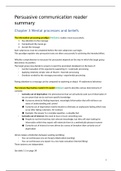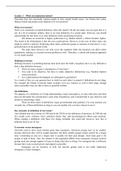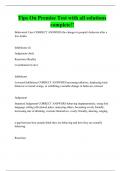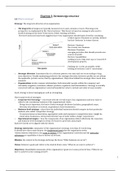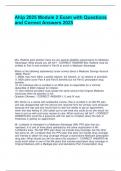BM41095
Assignment 2
1a- What is the handwashing compliance in modern hospitals? Does it differ between
specializations/countries?
Healthcare-associated infections (HAI) are threats for patients as well as healthcare
professionals and hand hygiene is one of the most important elements of HAI. Therefore,
handwashing in hospitals has great importance and we would expect it to be close to 100%
compliance but that is not the case for every hospital within and outside the country.
According to WHO (World Health Organization), in recent studies, the rate of handwashing
compliance (HC) affected patients ranged from 4.6% to 9.3% shown in Figure 1.[1] From
this example, we can understand the importance of handwashing for the hospital is high and it
differs between countries. Another example is from a non-European country India where the
priority for prevention and control of HC is minimal due to lack of sanitation, overcrowding,
and understaffing of hospitals.[2] Also, they have found out that the average compliance for
HAI of handwashing in India was 78% which is below what it should be (90%).[3] In Brazil,
the overall rate of HC was 62.3%.[4] In Poland where 95.6% of the hospital has procedures
for handwashing, the compliance rates were ranging from 20% to 80%.[5] In Canada, a
hospital had 16% handwashing compliance.[6] According to a study conducted in Turkey,
“Including 163 physicians and 573 activities associated with patient care, hand hygiene
adherence was found to be 57%”. [7] Last but not least, WHO conducted a review study of
hand hygiene and found that baseline compliance of hand hygiene among healthcare workers
was 38.7% (ranges 5-89%).[6] Thus, it seems like handwashing compliance differs between
countries and within the country. Hence, handwashing compliance is mostly lower in
developing countries than developed countries because of the lack of sources such as clean
water, not enough awareness but in some situations that seem to be not true. Furthermore, the
results of this handwashing compliance might be different depending on the handwashing
methods that have been used.
Figure 1: Handwashing compliance in developed countries. WHO. Ed. (2009)
1b- What are the main reasons for the low handwashing compliance?
According to a study by Kudavidnange et al. (2013), each health worker has a different
knowledge of how to clean hands with washing and alcohol rubbing.[8] This shows that
health workers need to be educated about these measures. Another article at Becker’s
1
, Healthcare featured in the January 2015 issue of The Joint Commission Journal on Quality
and Patient Safety found several causes for low handwashing such as:
-Forgetfulness of health worker
-Inconvenient placement of the sink or rubbing alcohol
-Broken sink
-Ineffective education
-Staff didn’t remind each other about handwashing
-Emergency situation
-Non-availability of hand hygiene products
-Unpleasant feeling of the handwashing product [9]
Therefore, on an individual level, insufficient information and, education is leading
misconception and when they use gloves, they assume there is no need for handwashing.
Furthermore, when a health worker forgets or skips the handwashing procedure, other health
workers are lack of warning the person or reporting and therefore, causing low compliance.
1c- Which interventions have been proven useful in increasing handwashing compliance?
One of the most useful interventions is the education of healthcare workers within the
hospital about handwashing. In a study, when they trained some of the healthcare workers,
they have seen an increase in handwashing. For instance, they found that hand hygiene rates
of trained doctors before patient contact were 82% while it was only 48% for untrained ones.
Also, after environment contact, while trained doctors had a 76% rate, untrained ones had
23%. [7] Figure 2 shows the whole results by Teker et al. (2015) and we can observe that
most of the time there is an increase of handwashing compliance when educated and trained.
Furthermore, according to a study by Borges et al. (2012), “Measured rates of compliance
hand hygiene before and during the implementation of a program of hand hygiene
improvement in Geneva, Switzerland resulted in an increase of
compliance rate from 48% to 66% over three years”. According
to WHO’s, WHO Guidelines on Hand Hygiene in Health Care: A
Summary, these interventions have been proven to be useful
“Health care workers’ education, audits of hand hygiene
practices and performance feedback, reminders, improvement of
water and soap availability, use of automated sinks, and/or the
introduction of an alcohol-based hand rub as well as
improvement of the institutional safety climate with participation
at the institutional, healthcare worker and patient levels ”.[1]
Also, WHO created a guideline called “My 5 Moments for Hand
Hygiene” to show healthcare workers when to perform hand
hygiene during clinical care. [23] The 5 moments for the hand
hygiene is shown in Figure 3.
Figure2: Hand washing
compliance percentages before
and after training/education.
Teker et al. 2015.
When they have applied WHO’s improvement
strategy, in a teaching hospital in Mali,
handwashing compliance increased from 8% at
2
Assignment 2
1a- What is the handwashing compliance in modern hospitals? Does it differ between
specializations/countries?
Healthcare-associated infections (HAI) are threats for patients as well as healthcare
professionals and hand hygiene is one of the most important elements of HAI. Therefore,
handwashing in hospitals has great importance and we would expect it to be close to 100%
compliance but that is not the case for every hospital within and outside the country.
According to WHO (World Health Organization), in recent studies, the rate of handwashing
compliance (HC) affected patients ranged from 4.6% to 9.3% shown in Figure 1.[1] From
this example, we can understand the importance of handwashing for the hospital is high and it
differs between countries. Another example is from a non-European country India where the
priority for prevention and control of HC is minimal due to lack of sanitation, overcrowding,
and understaffing of hospitals.[2] Also, they have found out that the average compliance for
HAI of handwashing in India was 78% which is below what it should be (90%).[3] In Brazil,
the overall rate of HC was 62.3%.[4] In Poland where 95.6% of the hospital has procedures
for handwashing, the compliance rates were ranging from 20% to 80%.[5] In Canada, a
hospital had 16% handwashing compliance.[6] According to a study conducted in Turkey,
“Including 163 physicians and 573 activities associated with patient care, hand hygiene
adherence was found to be 57%”. [7] Last but not least, WHO conducted a review study of
hand hygiene and found that baseline compliance of hand hygiene among healthcare workers
was 38.7% (ranges 5-89%).[6] Thus, it seems like handwashing compliance differs between
countries and within the country. Hence, handwashing compliance is mostly lower in
developing countries than developed countries because of the lack of sources such as clean
water, not enough awareness but in some situations that seem to be not true. Furthermore, the
results of this handwashing compliance might be different depending on the handwashing
methods that have been used.
Figure 1: Handwashing compliance in developed countries. WHO. Ed. (2009)
1b- What are the main reasons for the low handwashing compliance?
According to a study by Kudavidnange et al. (2013), each health worker has a different
knowledge of how to clean hands with washing and alcohol rubbing.[8] This shows that
health workers need to be educated about these measures. Another article at Becker’s
1
, Healthcare featured in the January 2015 issue of The Joint Commission Journal on Quality
and Patient Safety found several causes for low handwashing such as:
-Forgetfulness of health worker
-Inconvenient placement of the sink or rubbing alcohol
-Broken sink
-Ineffective education
-Staff didn’t remind each other about handwashing
-Emergency situation
-Non-availability of hand hygiene products
-Unpleasant feeling of the handwashing product [9]
Therefore, on an individual level, insufficient information and, education is leading
misconception and when they use gloves, they assume there is no need for handwashing.
Furthermore, when a health worker forgets or skips the handwashing procedure, other health
workers are lack of warning the person or reporting and therefore, causing low compliance.
1c- Which interventions have been proven useful in increasing handwashing compliance?
One of the most useful interventions is the education of healthcare workers within the
hospital about handwashing. In a study, when they trained some of the healthcare workers,
they have seen an increase in handwashing. For instance, they found that hand hygiene rates
of trained doctors before patient contact were 82% while it was only 48% for untrained ones.
Also, after environment contact, while trained doctors had a 76% rate, untrained ones had
23%. [7] Figure 2 shows the whole results by Teker et al. (2015) and we can observe that
most of the time there is an increase of handwashing compliance when educated and trained.
Furthermore, according to a study by Borges et al. (2012), “Measured rates of compliance
hand hygiene before and during the implementation of a program of hand hygiene
improvement in Geneva, Switzerland resulted in an increase of
compliance rate from 48% to 66% over three years”. According
to WHO’s, WHO Guidelines on Hand Hygiene in Health Care: A
Summary, these interventions have been proven to be useful
“Health care workers’ education, audits of hand hygiene
practices and performance feedback, reminders, improvement of
water and soap availability, use of automated sinks, and/or the
introduction of an alcohol-based hand rub as well as
improvement of the institutional safety climate with participation
at the institutional, healthcare worker and patient levels ”.[1]
Also, WHO created a guideline called “My 5 Moments for Hand
Hygiene” to show healthcare workers when to perform hand
hygiene during clinical care. [23] The 5 moments for the hand
hygiene is shown in Figure 3.
Figure2: Hand washing
compliance percentages before
and after training/education.
Teker et al. 2015.
When they have applied WHO’s improvement
strategy, in a teaching hospital in Mali,
handwashing compliance increased from 8% at
2

